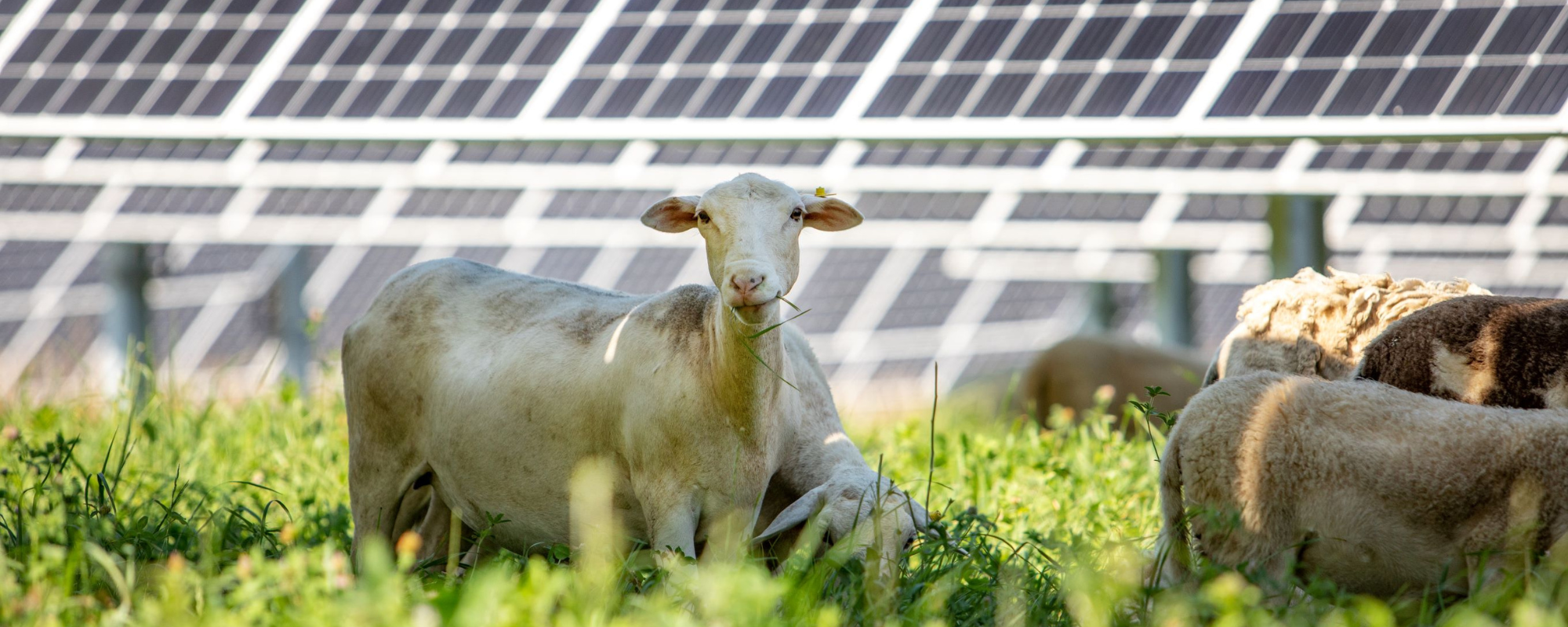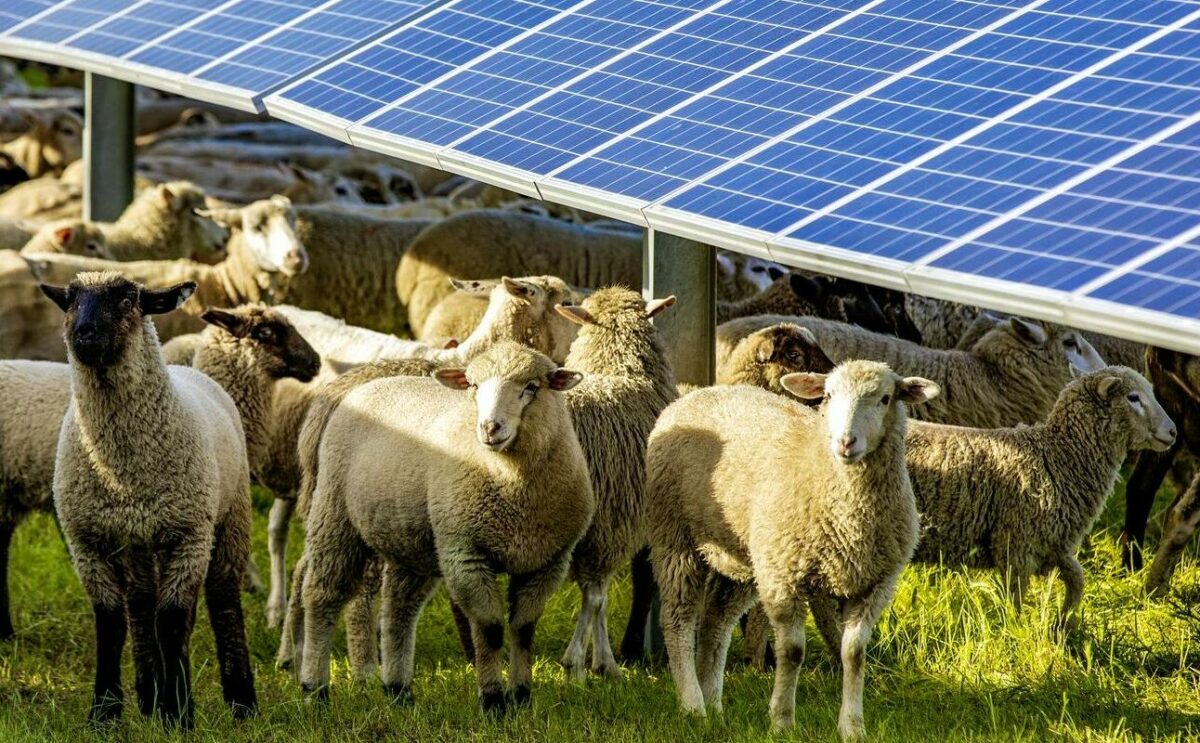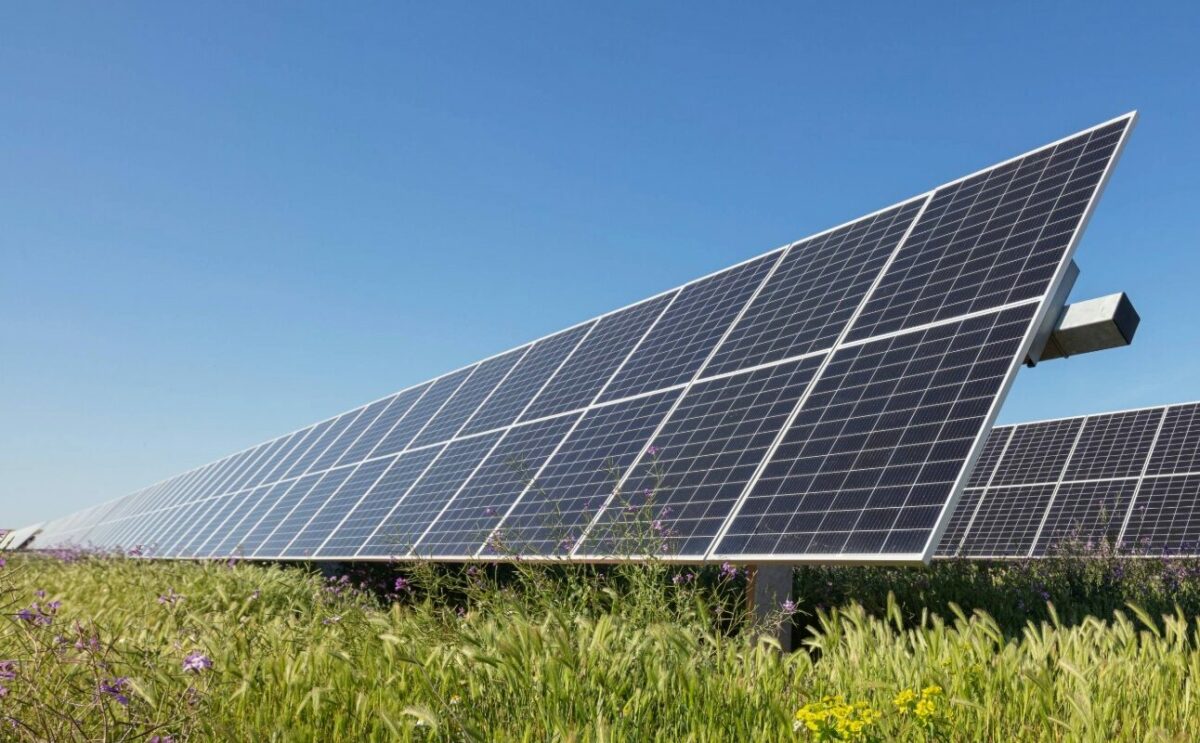Six reasons why solar farms make great grazing
Sheep grazing on solar farms provides economic and environmental benefits for all partners involved, from the solar industry to the farmer.
There’s no need to choose between using land for farming or for energy. Agrivoltaics, the combination of agriculture and solar electricity generation, where crops are grown and livestock raised underneath and alongside solar panels, means we can have the best of both worlds.
Whilst the solar industry collaborates with scientists and farmers on how to grow fruit, vegetables and other staple crops in fields with solar panels, sheep grazing has proved to be one of the most common solutions. This combination not only offers numerous environmental advantages but also presents an opportunity for farmers, landowners and the solar industry.
Let’s dive into six reasons why sheep grazing and solar are the perfect partnership:
A farmer can keep their flock
Sheep are the perfect height to fit under and around solar panels which is not the case for much bigger cows or horses. That means farmers can keep their flock.
Sheep are natural lawn mowers
Maintaining vegetation around and underneath solar panels is crucial. Sheep grazing provides a natural and cost-effective solution that goes back centuries. Sheep also have just the right appetite for grass and weeds. The sheep efficiently keep the grass and weeds in check, reducing the need for time-consuming, costly and environmentally unfriendly manual, chemical or mechanical methods. This ensures clear access to sunlight, allowing solar panels to operate at their maximum efficiency.
Happier and healthier animals
A research study found that the sheep that had access to a field with solar panels were overall happier and healthier than those that didn’t. The solar panels helped keep them cool and they spent more time sheltering, resting and grazing. They also spent less time standing idle, which can be an indicator of poor animal welfare. These benefits may even result in more and better quality wool. At least according to anecdotal evidence from an Australian trial.
Enhanced biodiversity
As sheep move and graze they trample their own waste and old plant matter into the earth. This encourages the growth of diverse plant species by acting as a natural fertilizer. A thriving, diverse flora provides a richer habitat for various insects, birds, and small mammals, fostering a thriving, biodiverse ecosystem that benefits both the environment and local wildlife.
Soil health
As mentioned, sheep dung acts as a natural fertilizer that rejuvenates the soil and enhances biodiversity. Condensation and rain run-off can also increase vegetation under solar panels by providing a source of irrigation, especially in drier periods. That’s more food for sheep. Sites with episodic grazing also showed better carbon storage and nutrient density in the soil. In collaboration with researchers from Shippensburg University it is one of the topics we are looking at on our own ‘living laboratory’ at the Lightsource bp Nittany Solar Farm in Pennsylvania, USA.
Economic benefits for farmers and landowners
For farmers that own the land solar farms are built on, sheep grazing can provide a much-needed extra income. In fact, it can be an economic ‘triple-win’, generating income from three potential revenue streams: leasing out land for solar panel installation, grazing agreements with the solar operators, and the agricultural products produced by the sheep such as wool, dairy or meat. This diversification of income not only improves the financial viability of solar farm projects but farms and farmers also.
Sheep grazing on solar farms is a great example of dual land use. One that provides both food (for the sheep and for us) and fuel (solar energy), through clean energy, healthy land and a boost for family farms.
Find out more
To find out more, visit our page on environmental stewardship.
Latest news
15 Dec, 2024
Australia: Lightsource bp reaches major milestone on solar and battery projects to deliver firmed renewable energy solutions
Lightsource bp announces it is commencing construction on its Goulburn River hybrid project and its Woolooga Battery Energy Storage System (BESS).
29 Oct, 2024
Wool quality and sustainability: Insights from Lightsource bp’s Wellington solar farm
Lightsource bp has seen promising results from the second round of wool testing at its Wellington solar farm, in New South Wales, Australia.
24 Oct, 2024
bp completes acquisition of Lightsource bp
bp has completed its acquisition of the remaining 50.03% interest in Lightsource bp.




